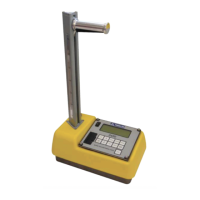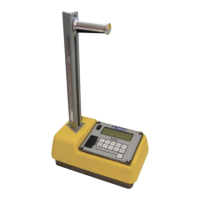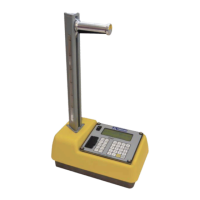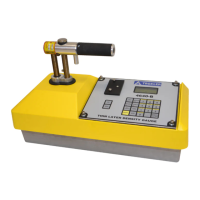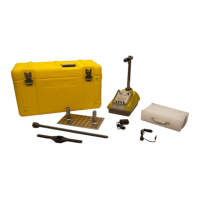2–2
The Model 3440 gauge utilizes two modes of operation: direct
transmission mode (with the source rod extended into the
material) and backscatter mode. Figure 2 and Figure 3 illustrate
these two modes of operation.
WARNING!
The source rod should always be locked in the
SAFE position when the gauge is not in use.
Source rod positions are described on page 3–5.
In direct transmission mode, the rod containing the Cesium-137
(8 mCi/0.3 GBq) source is lowered to the desired depth. The
detectors in the gauge base measure the radiation emitted by
the source rod. Gamma photons reaching the detectors must
first pass through the material, colliding with electrons present
in the material. Generally, the lower the number of photons that
reach the detectors, the more dense the material is.
In backscatter mode, the gamma photons that enter the material
must be scattered (or reflected) to reach the detectors. With the
rod locked in the first notch, the source and detectors are in the
same plane, referred to as the backscatter position. Photons
emitted from the source penetrate the material and the
detectors measure the scattered photons.
While the direct transmission geometry measures the average
density of the material from the source to the surface, the
backscatter geometry yields an average heavily weighted by the
density close to the surface.
Figure 4 shows two normalized top layer effect curves,
illustrating the percentages of photons at the detectors for
various depths. The two curves can be used to compute the
gauge response to layered material of different densities. For
example, the density of the top inch of a surface layer accounts
for about 52% of the backscatter density measurement.
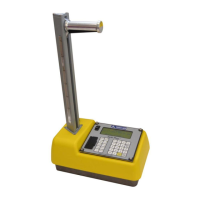
